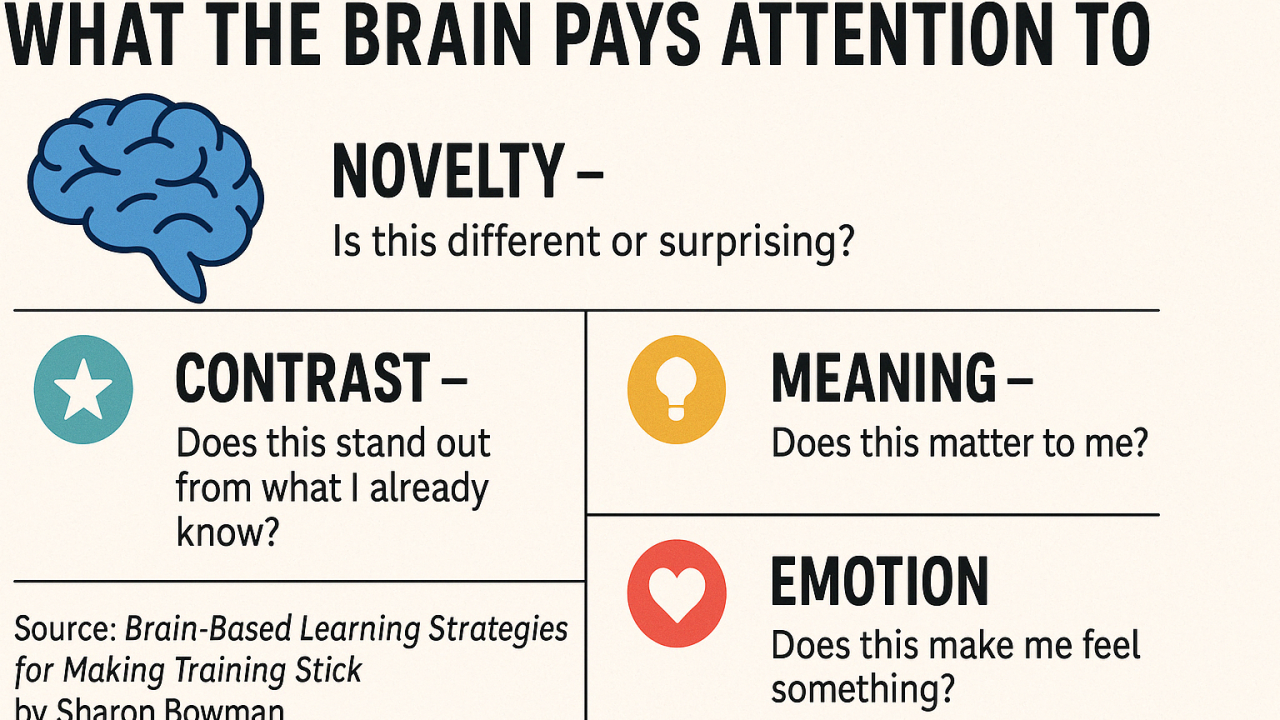
Why Some Trainings Stick (and Others Don’t): A Brain-Based Approach to Learning
I recently returned from a conference where I attended a mix of truly energizing sessions — and ones that didn’t quite land. It got me thinking: what made the best ones so memorable?
It wasn’t just the content or how the flare it was delivered with. It's a science.
The sessions that stuck used storytelling, interaction, humor, even moments of surprise. They made me feel something. And according to neuroscience, that’s not an accident — it’s how the brain is wired to learn.
As a certified Training from the BACK of the Room (TBR) trainer, I work with trainers to design sessions that aren’t just informational — they’re transformational. At the heart of this approach is an understanding of how the brain processes and retains information.
The Brain Pays Attention To Four Key Things:
🧠 Novelty – Is this different or surprising? 💡 Contrast – Does this stand out? 🔍 Meaning – Does this matter to me? ❤️ Emotion – Does this make me feel something?
If we design learning experiences with these four elements in mind, people are more likely to not only pay attention — but to retain what they’ve learned.
This framework comes from Sharon Bowman’s Using Brain Science to Make Training Stick, a companion resource to the TBR method, which draws on cognitive neuroscience and research-based strategies. If you’re designing any kind of training — whether in-person, virtual, or hybrid — this book is a goldmine. I'll include a mini guide on it here too! (Other great reads include Make It Stick by Brown, Roediger & McDaniel, and Brain Rules by John Medina.)
How You Can Use This Right Away:
The next time you build a training, try asking yourself:
- What’s novel here — how can I present this in a fresh or unexpected way?
- What’s emotional — can I connect this to a story, image, or personal reflection?
- What’s meaningful — how does this help solve a real problem my audience cares about?
- What contrasts with another element?
Even just one or two of these elements can make a huge difference in engagement and retention.